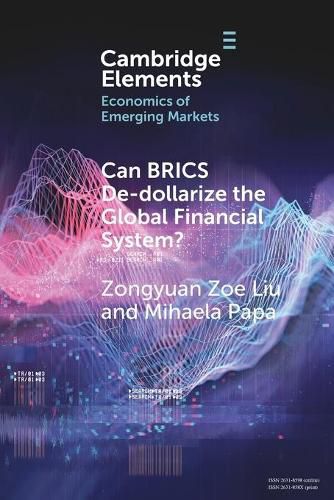Readings Newsletter
Become a Readings Member to make your shopping experience even easier.
Sign in or sign up for free!
You’re not far away from qualifying for FREE standard shipping within Australia
You’ve qualified for FREE standard shipping within Australia
The cart is loading…






Existing scholarship has not systematically examined BRICS (Brazil-Russia-India-China-South Africa) as a rising power de-dollarization coalition, despite the group developing multiple de-dollarization initiatives to reduce currency risk and bypass US sanctions. To fill this gap, this study develops a ‘Pathways to De-dollarization’ framework and applies it to analyze the institutional and market mechanisms that BRICS countries have created at the BRICS, sub-BRICS, and BRICS Plus levels. This framework identifies the leaders and followers of the BRICS de-dollarization coalition, assesses its robustness, and discerns how BRICS mobilizes other stakeholders. The authors employ process tracing, content analysis, semi-structured interviews, archival research, and statistical analysis of quantitative market data to analyze BRICS activities during 2009-2021. They find that BRICS’ coalitional de-dollarization initiatives have established critical infrastructure for a prospective alternative nondollar global financial system. This title is also available as Open Access on Cambridge Core.
$9.00 standard shipping within Australia
FREE standard shipping within Australia for orders over $100.00
Express & International shipping calculated at checkout
Existing scholarship has not systematically examined BRICS (Brazil-Russia-India-China-South Africa) as a rising power de-dollarization coalition, despite the group developing multiple de-dollarization initiatives to reduce currency risk and bypass US sanctions. To fill this gap, this study develops a ‘Pathways to De-dollarization’ framework and applies it to analyze the institutional and market mechanisms that BRICS countries have created at the BRICS, sub-BRICS, and BRICS Plus levels. This framework identifies the leaders and followers of the BRICS de-dollarization coalition, assesses its robustness, and discerns how BRICS mobilizes other stakeholders. The authors employ process tracing, content analysis, semi-structured interviews, archival research, and statistical analysis of quantitative market data to analyze BRICS activities during 2009-2021. They find that BRICS’ coalitional de-dollarization initiatives have established critical infrastructure for a prospective alternative nondollar global financial system. This title is also available as Open Access on Cambridge Core.